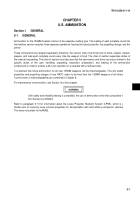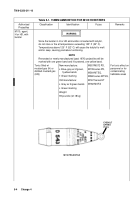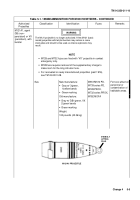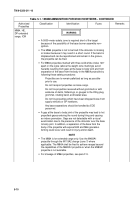TM-9-2350-311-10 - Page 524 of 775
TM 9-2350-311-10
5-2
Change 4
5-2
AUTHORIZED MUNITIONS
5-2.1
Authorized Projectiles
WARNING
•
Unauthorized assembly and use of projectiles and propelling charges are extremely
dangerous. Make sure projectiles are marked 155 H (not G).
•
Only those items listed are authorized. Firing of unauthorized propelling charge,
projectile, or fuze combinations can result in critical malfunctions.
•
Charge 1 (M3 series green bag (GB)) will not be fired in the M109A2/M109A3/M109A4
M185 or M109A5 M284 cannon assembly. Charge 2 (GB charge) may be used with any
M100 series projectile, M449 projectile, M804/M804A1 projectile, and the M485 projectile,
however, stickers may occasionally occur. All other projectiles, except the M795, use
minimum charge 3 (GB) or charge 3 (white bag (WB)) charge and higher. M795 uses
minimum charge 3 (GB) or charge 4 (WB). Firing below these charges may result in stickers.
Important information is stenciled on each projectile. New and old projectile colorings and markings are listed in
Table 5-1, 155MM Ammunition for M109 Howitzers. Various markings are identified below. Knowing the color
coding and the meaning of the markings will aid in the rapid selection of the required projectile when firing.
Projectile and fuze combinations for authorized rounds are given in Table 5-1, 155MM Ammunition for M109
Howitzers. Authorized projectile propelling charge combinations are given in Table 5-2, Authorized
Projectile/Propelling Charge Combinations for M109A2/M109A3/M109A4 M185 and M109A5 M284 Cannon
Assemblies (155MM).
Projectiles of current manufacture, with deep fuze cavities and supplementary charges of TNT, are suitable for use
with the long intrusion (M728 or M514 series) or the short intrusion (M732) proximity fuzes. The supplementary
charge must be removed when the long intrusion proximity fuze is used; it must remain in place whenever any
other authorized fuze is used.
Deep–cavity projectiles are identified by the words, W/SUPPL CHG, marked on the projectile. Weight zones are
indicated on projectiles by one or more squares of the same color as the markings. Four squares indicate standard
or normal weight for which no weight corrections are necessary when computing firing data. There may also be
punch marks in center of squares for night identification of weight zones by touch.
Back to Top




















